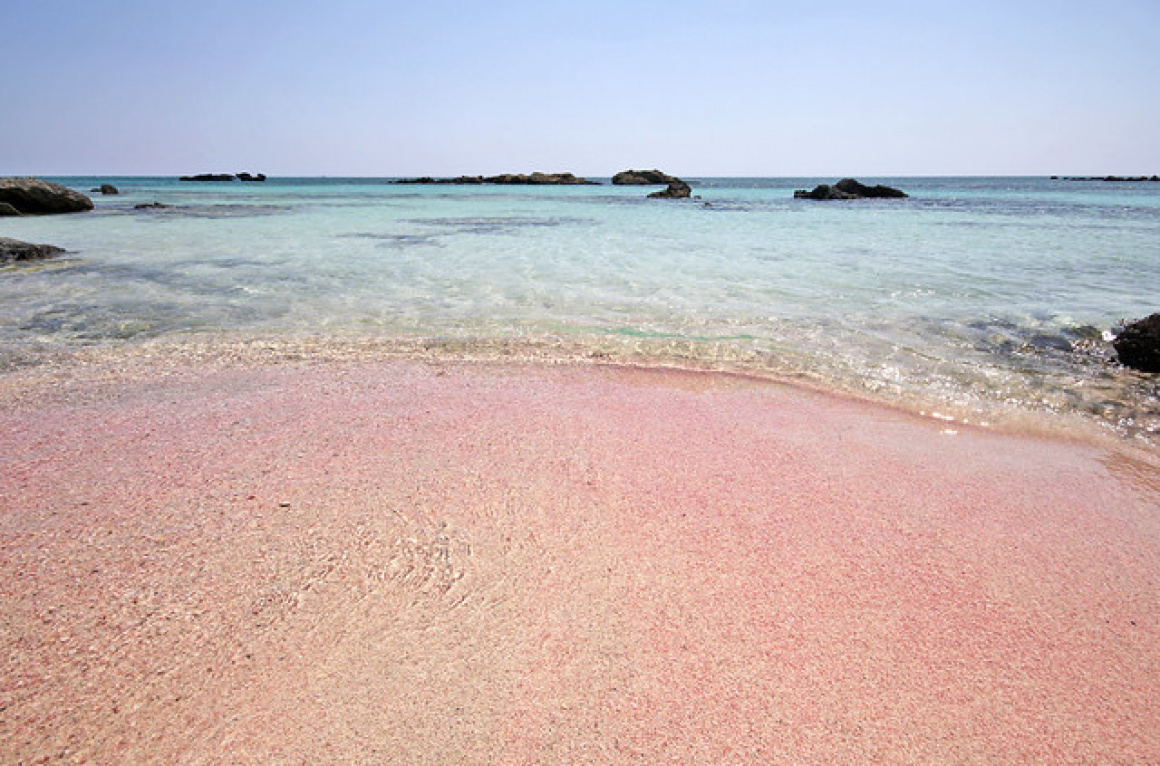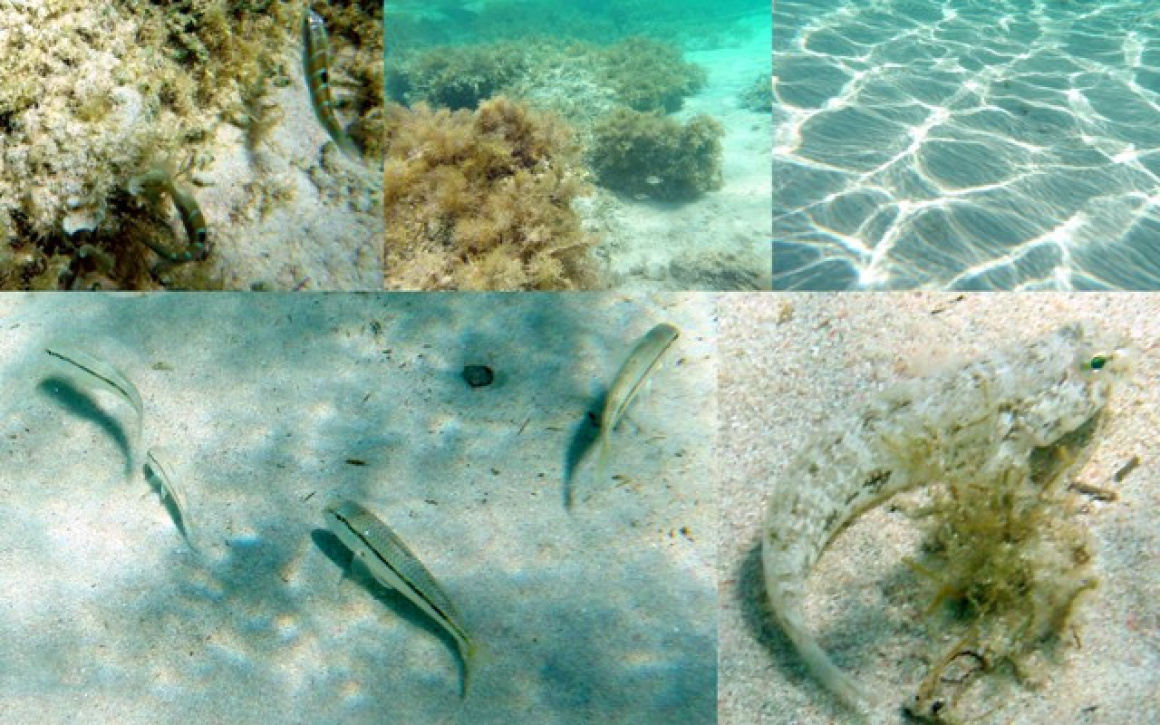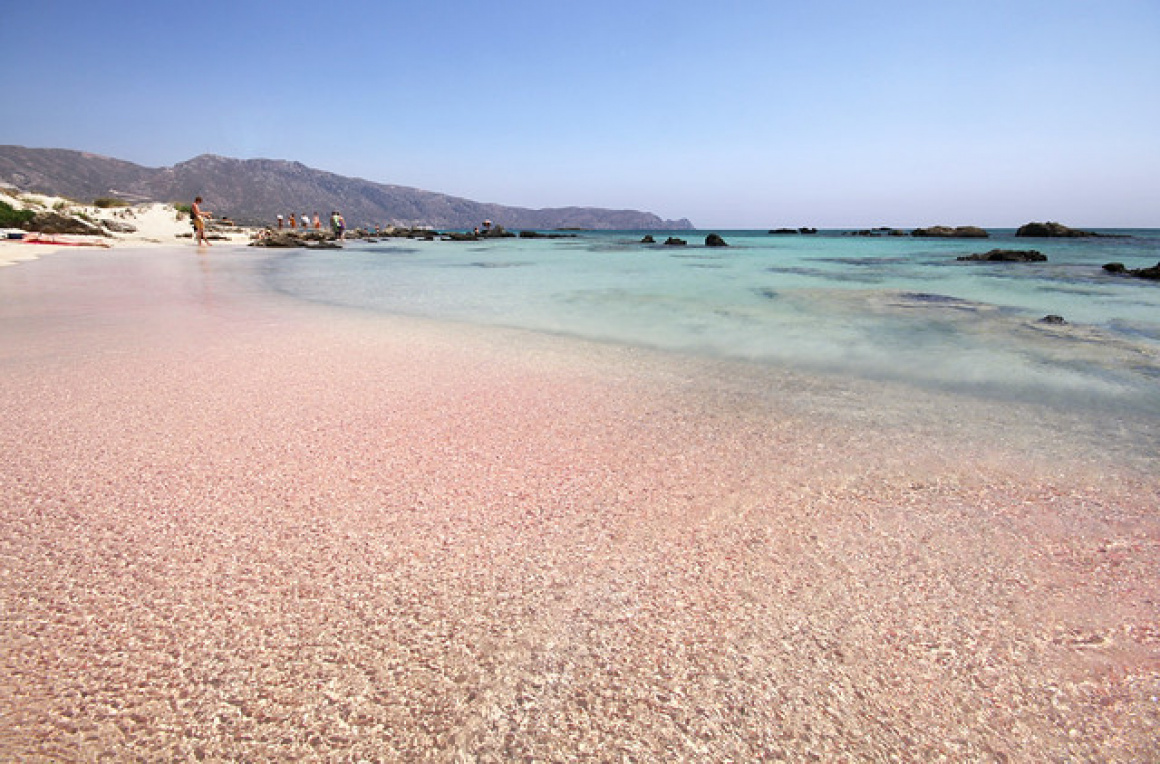Overview
Picture a tropical lagoon with waters in every shade of blue, gently lapping against sand so pale it blushes pink in the sunlight – this is Elafonisi Beach, one of Crete's most mesmerising natural wonders. Tucked away in the remote southwest corner of the island, Elafonisi (sometimes spelled Elafonissi) is actually a tiny islet just off the mainland, separated by a shallow lagoon. When the tide is low, you can literally walk across the sea – wading through ankle-deep, crystal-clear water – to reach the island. The scene feels otherworldly: dunes sprinkled with wildflowers and juniper bushes, a backdrop of distant mountains, and that famous pink sand glowing at the water’s edge. It's no surprise Elafonisi often ranks among the world's most beautiful beaches. Yet beyond its postcard beauty, this place carries a tranquillity and wildness that make the journey here an adventure and an escape rolled into one.
Why is the Sand Pink?
Elafonisi's delicate pink sand is a quirk of nature that has made it legendary. As you stroll the shore, you'll notice subtle rosy hues underfoot, especially where waves lap the shoreline. The coloration comes from countless crushed shells, coral pieces, and tiny marine organisms that mix with the white sand. In certain light, the entire beach has a gentle pink blush – a rare phenomenon seen in only a few places worldwide. However, the pink is more vivid in some spots than others and can vary by season and tides. Please remember: this pink sand is part of what makes Elafonisi special and is protected – taking sand as a souvenir is strictly forbidden (plus, removing it would diminish the beach's beauty for others). Instead, take plenty of photos and leave only footprints.

 'Elafonisi' - Attribution: Miguel Virkkunen Carvalho
'Elafonisi' - Attribution: Miguel Virkkunen CarvalhoGetting There & When to Visit
Reaching Elafonisi is half the adventure. From Chania (the nearest major city, about 75 km away), the drive takes you through spectacular scenery – winding mountain roads, the tunnel at Topolia Gorge, and traditional villages. The last stretch approaches the Libyan Sea, with glimpses of shimmering blue as you descend toward the coast. If you're not driving, buses in summer run from Chania and Kissamos, or you can join guided day tours. Due to its remote location, Elafonisi remained relatively “hidden” for years, but it's firmly on the tourist map now – in peak season (July–August) expect many visitors despite the isolation. Timing your visit can make a big difference: arrive early in the morning to have the sands nearly to yourself, or come in late afternoon when day-trippers leave and the sun begins to set golden over the sea. The beach itself is well-organised in one area (near the parking) with sunbeds, umbrellas, and a couple of small canteens for basic snacks and drinks. But walk further towards the island and things get more pristine and untouched.
Keep in mind that Elafonisi is a protected nature reserve, part of the Natura 2000 network, so there are no big buildings or hotels on the beachfront – just natural beauty. Basic facilities mean you should come prepared: bring water, sunscreen, and perhaps a beach umbrella especially if you venture away from the organised area. Also, be careful not to disturb the dunes and the fragile plants that hold them together.

 'Elafonisi Crete' - Attribution: julukustavisuomi
'Elafonisi Crete' - Attribution: julukustavisuomiWade to the Island:
The highlight is walking across the shallow lagoon to explore the Elafonisi islet itself. With water sometimes only knee-high (or even dry sandbars at times), it's an easy and fun crossing for all ages. On the islet's far side, you'll find more secluded sandy coves facing the open sea – often much quieter if the main beach is busy. Feel the sense of escape as you claim a little patch of paradise for yourself.
Explore the Dunes:
Wander gently through the dune trails (mindful to stick to established paths). You'll see unique vegetation like sea daffodils, sand lilies, and low cedar-like shrubs that survive in this arid, salty environment. In spring, tiny wildflowers dot the sands. The ecosystem here is delicate; signs will remind you it's protected, and indeed the whole area is a Natura 2000 reserve for its rare flora and fauna. If you're lucky, you might spot a caretta-caretta (loggerhead sea turtle) – they sometimes nest on the quieter ends of Elafonisi, one reason it's kept natural and undeveloped.
Snorkeling:
While not a coral reef, the clear shallow waters make for enjoyable snorkeling, especially for beginners and kids. Small fish are easily seen darting around your legs in the lagoon. Near some rocks you might find colourful wrasses and maybe anemones. The water is typically calm and almost bath-like in the lagoon, warmed by the sun and only a meter or so deep in large areas – perfect for families with young children to splash safely.
Chapel of Agia Irini:
Over on the islet, if you walk east along the coast, you'll come to a little white chapel dedicated to St. Irene. It's a humble shrine, often kept locked, but with a peaceful view out to sea. Nearby, atop a gentle rise, you might notice a plaque – it commemorates a somber piece of history: in April 1824, during the Greek War of Independence, hundreds of Greek women and children who had taken refuge on Elafonisi were tragically massacred by Ottoman soldiers. This event lends a poignant layer to an otherwise idyllic place – a reminder that even paradises have seen pain. Many visitors pause here for a moment of reflection.

 'Chapel Courtyard' - Attribution: mikecogh
'Chapel Courtyard' - Attribution: mikecoghWinds & Weather:
The southwest coast of Crete can be windy. A brisk breeze often sweeps over Elafonisi in the afternoons, which can be a blessing on a hot day (keeping you cool) but might kick up sand. If winds are strong, you may prefer to settle in a slight hollow or behind a dune for natural windbreak. Also, there is little natural shade aside from a few tamarisk trees near the main beach – plan accordingly with hats or umbrellas.
Crowd-Beating:
In the heart of summer, Elafonisi sees a midday influx from tour buses and boats. To experience its tranquil side, try to stay overnight in the area and hit the beach at sunset or sunrise. The sight of the pink-tinged sand at dawn, with hardly another soul around, is pure magic.
Respect Nature:
As emphasised, this is a protected area – no motorised water sports, no littering (pack your trash out!), and no removing natural souvenirs. You might notice fenced-off patches on the beach; these often protect nesting sites or dune restoration areas. By observing these rules, you help keep Elafonisi pristine.

 'Agia Irini Gorge' - Attribution: Rob Oo
'Agia Irini Gorge' - Attribution: Rob OoWhere to Stay Near Elafonisi
While there are no hotels directly on Elafonisi's shore (thanks to its protected status), you can find comfortable accommodations a short drive away, allowing you to enjoy the beach in the early and late hours. A highly convenient option is Elafonisi Resort by Kalomirakis Family, a small hotel set amid olive trees just up the road from the beach. It offers simple, clean rooms and even an on-site taverna – guests love waking up and being able to walk to Elafonisi first thing in the morning. There are also a handful of family-run guesthouses in the tiny village of Chrisoskalitissa about 5 km away (near the famous Chrysoskalitissa monastery). For instance, Glykeria Hotel in Chrisoskalitissa is often praised by travelers for its friendly welcome and panoramic terrace views of the sunset over the Libyan Sea. Closer to the beach, places like Elafonisi Rooms For Rent and Xasteria provide basic but convenient lodging – they are among the popular picks in the Elafonisi area.
If you don't mind a slightly longer drive, the seaside town of Paleochora (about an hour to the east) is another great base, with a wider choice of tavernas and nightlife, from which you can day-trip to Elafonisi. In any case, book well ahead for summer stays near Elafonisi, as rooms are limited and demand is high. Waking up close by means you can arrive at the pink beach before the crowds and perhaps have a sunrise swim nearly alone – an experience many say is the highlight of their Crete trip.

